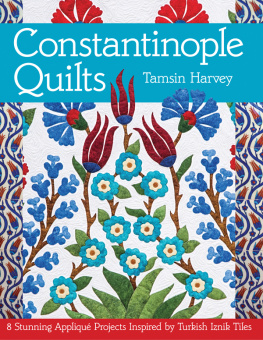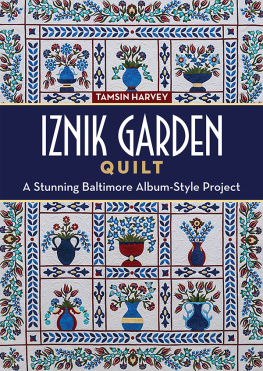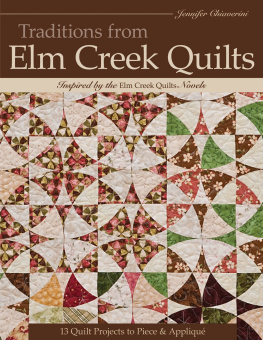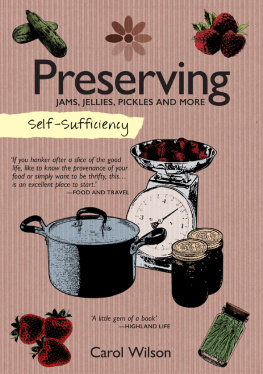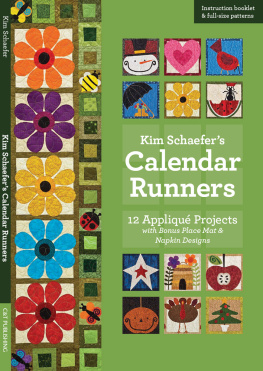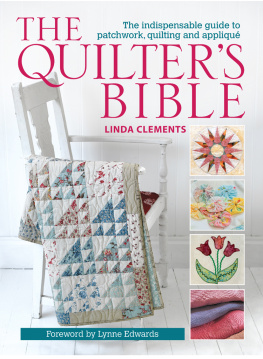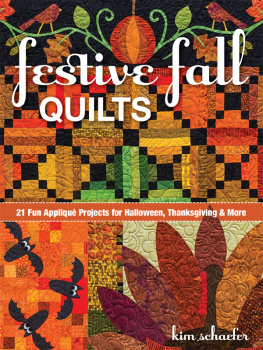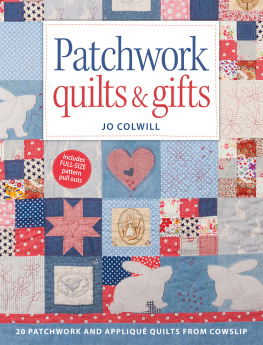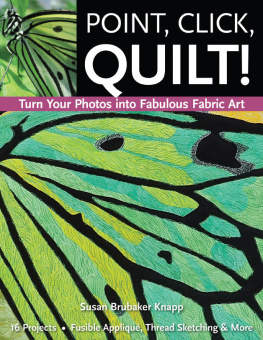Publisher: Amy Marson
Creative Director: Gailen Runge
Art Director: Kristy Zacharias
Editor: Lee Jonsson
Technical Editors: Susan Nelsen and Susan Hendrickson
Cover Designer: April Mostek
Book Designer: Christina Jarumay Fox
Production Coordinator: Freesia Pearson Blizard
Production Editor: Katie Van Amburg
Illustrator: Kirstie L. Pettersen
Photo Assistant: Mary Peyton Peppo
Inspirational photography by Tamsin Harvey; Styled photography of projects by Kaan Aybudak; Instructional and subject photography by Diane Pedersen, unless otherwise noted
Published by C&T Publishing, Inc., P.O. Box 1456, Lafayette, CA 94549
DEDICATION
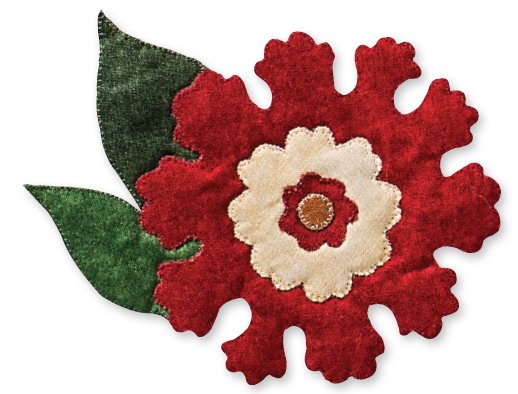
To Mum and Dad, who have given me the opportunity, support, and strength to follow my dreams and to find my own path in life
ACKNOWLEDGMENTS
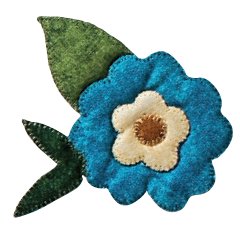
When writing a book, you have many people who come on the journey with you. Without their support and encouragement, this book would not have been possible.
Thank you to Angela, for without her help this book and my quilting career would never have occurred.
Thank you to my family and Jan, for allowing me to create and to follow my dreams.
To the staff and extended family at Berrima Patchwork, who have shared this journey with me.
To four amazing mentors, Sandra Leichner, Michele Hill, Mariya Waters, and Carol Doak. You have all encouraged me, supported me, and given me feedback and advice. Thank you for being there when I had no idea what to do, sharing your knowledge and expertise, and so much more. I especially thank you all for your friendships.
To Greg and the staff at Bernina Australia, for the loan of a Bernina 750QE sewing machine and for your encouragement and your belief in my designs.
To Bob and Heather Purcell at Superior Threads, for their friendship and advice. You both do an amazing job of educating consumers about threads and needles. Thank you for the Superior Threads Kimono silk threads that I had the pleasure of using in the creation of these projects.
To Tim and Jim at Lloyd Curzon Textiles Australia, for their support throughout the process of writing this book and creating the designs.
Thank you to the fantastic team at C&T Publishing, who guided me through the process of writing this book and making it come to life.
To Kaan Aybudak, for the wonderful photographs of the projects, taken on location in Istanbul.
To the team at MA Productions, Mnir, Esra, and Yuncay, for sorting out the mountain of paperwork related to the special permits from the mosques, palaces, and museums for the photography and research of this book. Thank you for being my support team and translators while I was in Istanbul.
Also in Turkey, thanks to the following:
Turkish Ministry of Culture and Tourism
Religious Affairs Department of Istanbul Province
Governors Office of Bursa Province and Istanbul Province
Staff at Rstem Pasha Mosque
Directorate and staff at Hagia Sophia (Ayasofya) Museum
Directorate and staff at Topkap Palace Museum and Topkap Palace Museum Harem Apartments
Directorate and staff at Hotel Arcadia Blue Istanbul
znik Foundation and Prof. Dr. Il Akbaygil
Staff at Sultanahmet Mosque
Staff at Eyp Sultan Mosque
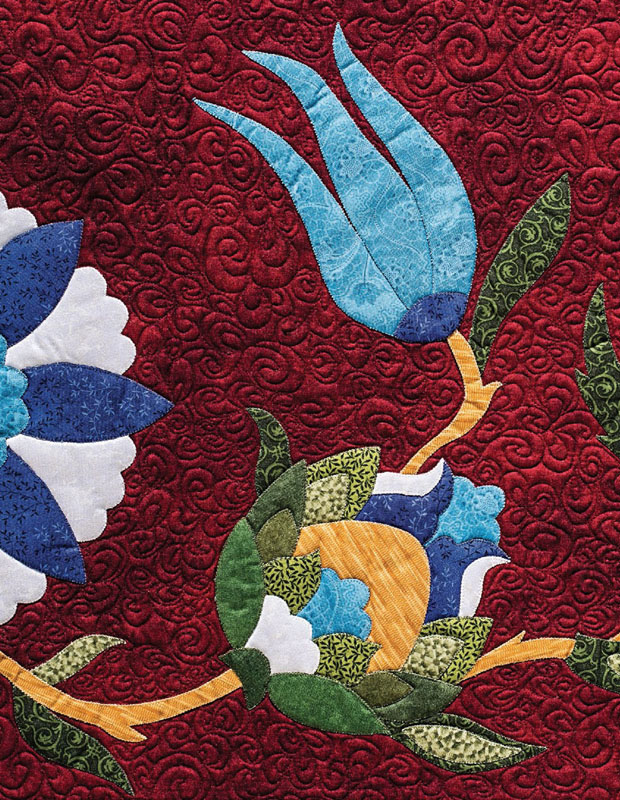

During the sixteenth and seventeenth centuries, the Ottoman Empire was the most powerful state in the world. Because of its location, the Ottoman Empire was at the center of interaction between the Eastern and Western worlds. When the Ottomans conquered various regions, they absorbed many of the traditions, art forms, and institutions of these cultures. They were known for adopting these cultures and then turning their traditions into elaborate new forms, which created a unique and distinctively Ottoman cultural identity.
znik pottery originated in the town of the same name. znik is located in western Anatolia, in the province of Bursa, historically known as Nicaea. The town was selected for its nearby deposits of potters clay and quartz. Trees from a local forest provided the fuel required for the ceramic kilns. zniks proximity to Constantinople (modern-day Istanbul) allowed for ease of delivery. From the late fifteenth century until the end of the seventeenth century, this town was the main source of ceramics and tiles for the Ottoman Empire.
znik pottery was originally inspired by Chinese porcelain, highly prized by the Ottoman sultans. While znik had been creating cheap and rather ordinary pottery since before the fifteenth century, Chinese porcelain was expensive. The Ottoman court began sponsoring a series of workshops that created luxury items worthy of the new court.
The introduction of a new form of ceramic decoration called underglaze painting changed the town into a known source of superb technical quality and artistry. The early examples of znik wares mainly consisted of one colorcobalt blue.
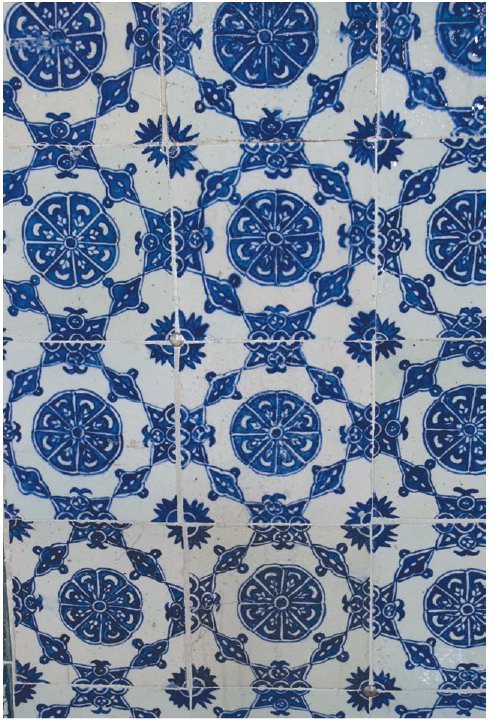
Cobalt blue tiles from Topkap Palace
As the artists continued to experiment and develop their trade, they incorporated new colors into their designs. In the 1530s pale purple, green, and turquoise began to be used. With the expanded selection of colors available, more floral motifs emerged, including tulips, carnations, peonies, roses, and hyacinths. znik wares, prized for their quality and uniqueness, were being exported over much of the Middle East and Europe.
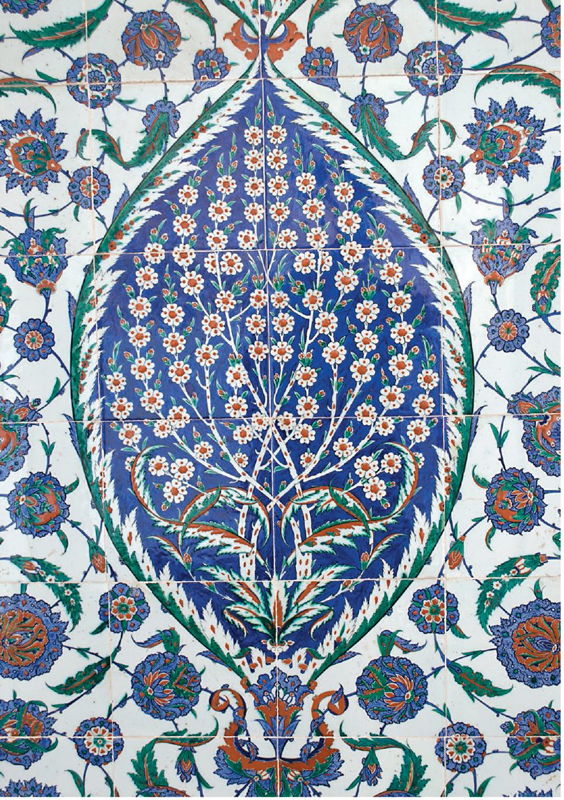
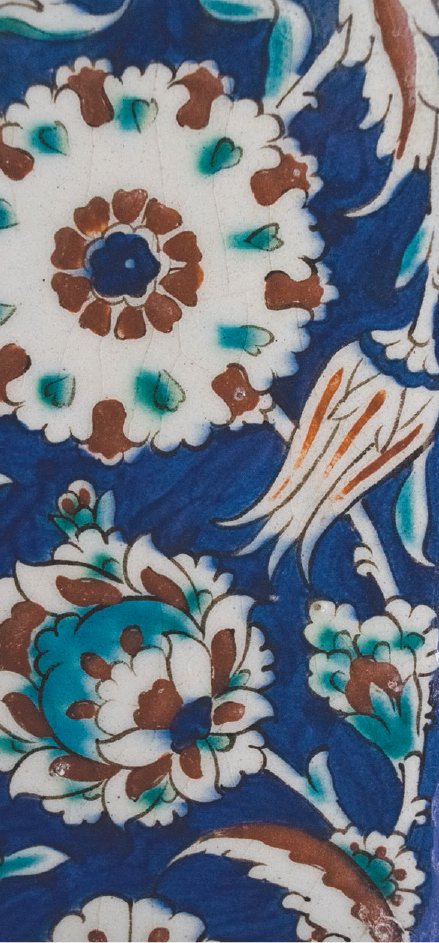
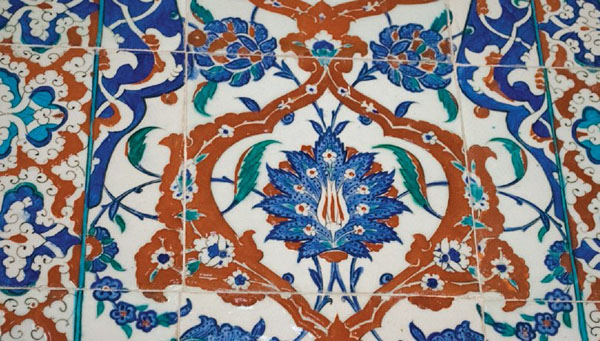
Photos of znik tiles located within the tomb of Sultan Selim II at the Hagia Sophia Museum
The use of znik tiles as decoration was slow to emerge. As the artists and new techniques developed, the demand for tile mosaics and panels increased and was stimulated and controlled by court commissions. Examples of these mosaics and panels can still be seen in mosques and palaces throughout Turkey. The Sultanahmet Mosque, located in Istanbul, used more than 20,000 handmade ceramic tiles featuring designs of flowers, fruits, and cypresses, including 50 different tulip designs. It is the tile colors that have given this mosque its more commonly used name of the Blue Mosque.
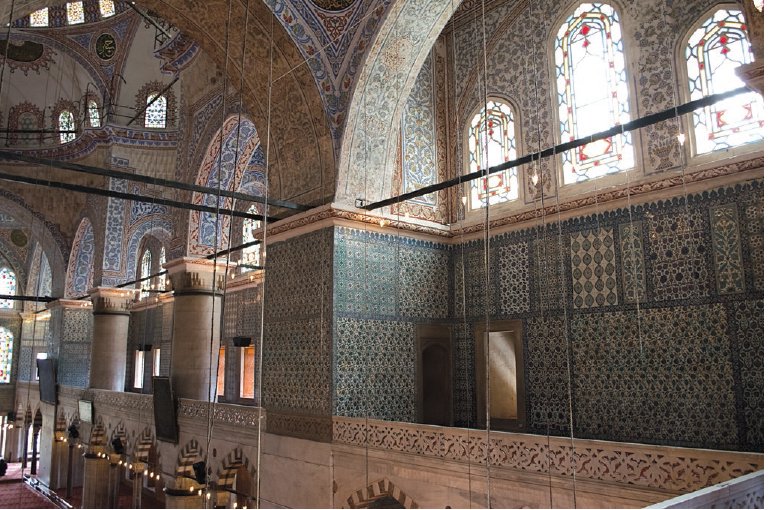
Inside the Sultanahmet Mosque, large znik tile panels line the walls along the gallery level.
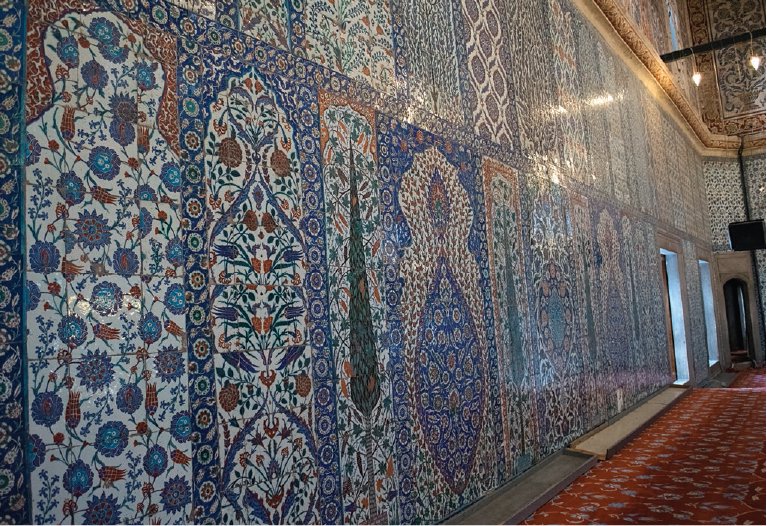
Next page
